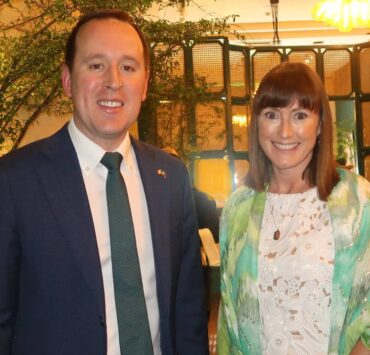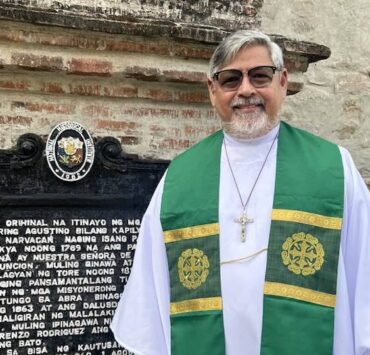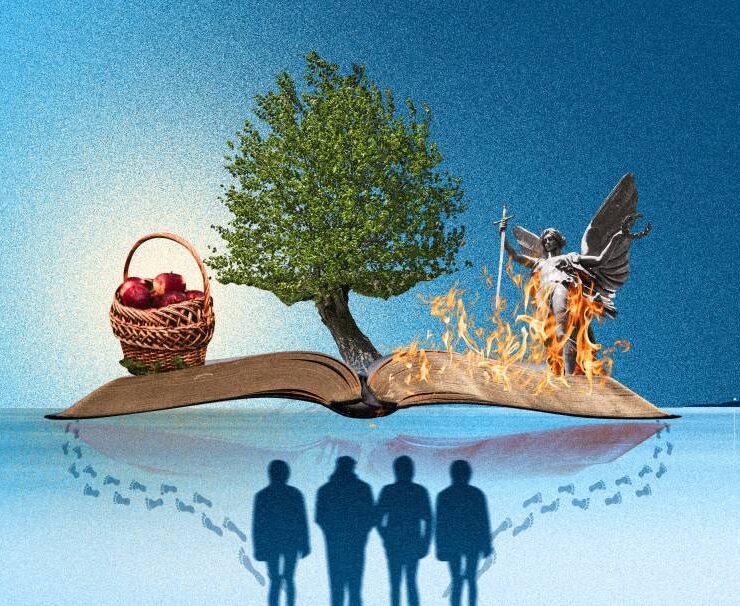50 years of Alay Kapwa

April 13—Palm Sunday
Readings: Blessing of Palms, Gospel—Luke 19:28-40
Mass Proper—Isaiah 50:4-7, Psalm 22, R. My God, my God, why have you forsaken me.; Philippians 2:6-11; Gospel (Short Form)—Luke 23:1-49
Today, Palm Sunday, is also known as Alay Kapwa Sunday, and this year we celebrate the Golden Jubilee of Alay Kapwa.
I would like to offer a somewhat different set of reflections on this special Alay Kapwa Sunday, “dissecting” the term Alay Kapwa, i.e., offering of oneself to the other in solidarity and fraternity.
The Passion narrative in today’s Gospel, which is always the Gospel for Alay Kapwa Sunday, with rotating versions each year from Luke, Mark, and Matthew, gives us the story of the Lord’s perfect offering of self.
He endured his passion of suffering, both physical and psychological or emotional, because of another passion. This passion is his deepest desire to fulfill his mission—the promised redemption of all humanity and the whole of creation.
This passion of his deepest desire came from his relationship with his Father as the Beloved Son. The suffering known as passion was transformed into a perfect sacrifice because of his perfect loving obedience to the Father. This was crucial to our redemption.
The night before his passion of suffering, he got in touch with a deeper passion, his love for his Father, his perfect loving obedience: “Not my will, but your will be done.” (Luke 22:42)
We can rightly consider and reflect on this reality that Alay Kapwa is a spirituality rooted in the passion of Jesus, the perfect loving obedience that made him offer his life on the Cross after enduring a passion of suffering physical and psychological violence.
This is the first point to consider: Alay Kapwa is a spirituality of perfect loving obedience to the Father’s will as a disciple of Jesus who defined his service and offering: “…the Son of Man did not come to be served, but to serve, and to give his life as a ransom for many.” (Matthew 20:28) “I came so that they might have life and have it more abundantly.” (John 10:10)
Social action
Our second point for reflection is another narrative, a more contemporary one that happened in the mid-1980s.
I was then a young Jesuit seminarian or scholastic. We had a series of sessions for what was called the Province Congress where all Jesuits of the Philippine Province had to participate. There were four—Cagayan de Oro, Cebu, Baguio, and Ateneo de Manila. I joined this last one in Ateneo.
There were presentations on the different apostolates of the Philippine Jesuits. Fr. Noel Vasquez, S.J. was the one in charge of the Social Apostolate and gave an excellent presentation.
Bishop Francisco Claver, a former Jesuit and then a “retired” bishop (but later on recalled to serve again until his full retirement in 2004) who returned to live and work with Jesuits in their apostolates, asked Fr. Vasquez why the Jesuits were in the social apostolate.
Fr. Vasquez, whose doctorate, if I am not mistaken, was on development economics from the London School of Economics, gave a clear explanation of the need to organize base groups, labor, farmers, fisherfolk, etc. as part of the Jesuits’ and church’s response to the social situation in the country.
Then Bishop Claver, without any tinge of sarcasm, but vintage Bishop Claver, said, “Noel, I thought your answer in Baguio was better. Let me repeat it and tell me if you still believe it…
“We are in the social apostolate to present the Gospel worldview in doing social work or engaging in social action. If this is not the case, then we have no business being in social work or social action.”
This is the second point to consider: Alay Kapwa is service to others with the Gospel worldview as our horizon.
To paraphrase Fr. Catalino G. Arevalo, S.J., if we are to live out the spirituality and the service of Alay Kapwa, we must set our lives within the horizon of a dream larger than life.
This dream is the dream of Jesus to live out his identity and mission expressed thrice in the Gospels, that he is the Beloved Son in whom the Father is well pleased.
We encountered this first in his baptism when Jesus heard this in his beatific vision. Then it was repeated and revealed to Peter, James, and John.
Its third and definitive expression was no longer through words, but through the perfect loving obedience unto death on the Cross and the perfect response in love through the Resurrection.
This is Alay Kapwa, the worldview of the central mystery of our faith, the Cross and Resurrection of Jesus, the perfect sacrifice born from perfect loving obedience. In short, perfect love and service in all things, “in omnibus amare, in omnibus servire.”
‘The medicine of mercy’
The third point for reflection is another narrative of one who galvanized and inspired the growing desire of the church to return to its roots, the story of Vatican II and the humble St. Pope John XXIII—“il papa buono,” the good pope.
St. Pope John XXIII ushered in the age of renewal in the church, bringing the church from Rome into the world, into the lives of millions in other continents. In convening Vatican II, he envisioned a church that will administer “the medicine of mercy” to a world wounded and broken.
This period consolidated the church’s involvement in social action. He envisioned a church in the modern world particularly exercising its pastoral role and involvement in important social issues.
His final encyclical issued a few months before he died gives us a good summary of his dream and vision: “Pacem in Terris,” Peace on Earth.
In the encyclical, he wrote that genuine peace on earth can be attained only through a respect for human rights, justice, and solidarity among nations. It is the first encyclical addressed to “all men [and women] of goodwill.”
Many say this was St. Pope John XXIII’s final will and testament. It echoes the beginning of the good news of our salvation.
“The angel said to [the shepherds], ‘Do not be afraid; for behold, I proclaim to you good news of great joy that will be for all the people. For today in the city of David a savior has been born for you who is Messiah and Lord. And this will be a sign for you: you will find an infant wrapped in swaddling clothes and lying in a manger.’ And suddenly there was a multitude of the heavenly host with the angel, praising God and saying: ‘Glory to God in the highest and on earth peace to all men and women of goodwill.’” (Luke 2:10-14)
This is Alay Kapwa—all men and women of goodwill building a church, a world closer to the Kingdom of God; a life with a spirituality of service, loving service.
As we celebrate 50 years of Alay Kapwa, we renew this hope of Pacem in Terris, a peace that comes from justice, equality, and love.





















